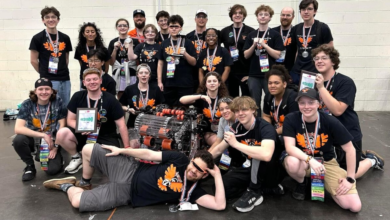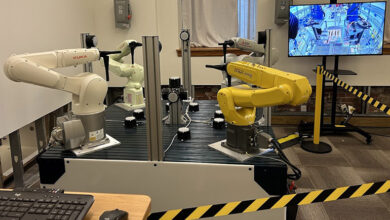Navigating the Future: Learning from the Dormant Giants of Industry and the Robotic Revolution | by THE GODFATHER OF TECH | Apr, 2024

Reflecting on my 18-year tenure with General Motors, where I recently concluded my journey as a Distinguished Technical Fellow, I harken back to the fledgling stage of my career. As a IT worker under the guidance of my CIO, vivid discussions about GM depicted it as a formidable but dormant giant — a sleeping dragon that had spearheaded the automotive sector for a centuries, alongside its peers from the vaunted “Big Three.” This metaphor served as a critique of industry titans who, feeling secure in their market dominance, tend to slow their pace of innovation, content to let nascent companies experiment and take risks while they enjoy their leading position. This approach often involves a deliberate observation of these smaller players, waiting for the opportune moment to leapfrog ahead by building upon the innovations they have tested.
Apple’s foray into the Metaverse and the digital twin sector serves as a contemporary example, taking from 2013 to 2024 to jump into the space. Yet it remains unclear if they’ve been outpaced, as the technological paradigm itself is rapidly shifting toward virtual, screenless, touchless, and voice-activated computing, which negates the need for headsets and allows for projection of displays anywhere via Pico projectors.
Returning to the notion of ‘Sleeping Dragons’ like Apple, or General Motors, who stand watch as smaller companies drive innovation — Boston Dynamics comes to mind with their robotic dogs, which have been leading the way in military applications for a decade. Yet, they’ve been more reticent regarding humanoid robots. Contrarily, companies like Tesla and Mercedes, along with Amazon, have embraced these robots, introducing over 100,000 into their manufacturing and operational workflows. These humanoid robots work alongside humans but are forecasted to eventually supplant them in high-risk roles, enhancing safety and freeing humans for more intricate tasks.
This narrative is underscored by recent tragedies, such as those at Delta, where two individuals tragically lost their lives in separate incidents involving aircraft engines — a grim reminder of the potential safety enhancements robotics could bring. In a recent video that initially seemed like a mere CGI creation, Boston Dynamics’ new Atlas robot is showcased — a machine that is not just a replication of human abilities but one that excels beyond our physical capabilities. Initially skeptical, I confirmed the video’s authenticity with colleagues at Boston Dynamics. The Atlas robot embodies an advanced iteration of humanoid agility, maneuvering from prone to standing in moments, with a level of flexibility unattainable by humans. This leap in robotics harkens to an animated Pixar creation due to its head’s design, akin to a Pixar character’s flashlight. It demonstrates how robots, capable of recovering quickly and navigating workspaces humans can’t, presage a future where they are not just novel but essential in certain domains. Enclosed is the video — watch it and prepare to be astonished as I was. It’s only a few minutes but concisely encapsulates the trajectory of robotics and their revolutionary role in the future of manufacturing and beyond.
As we look back on the legacies of titans like General Motors and the shifting landscapes of companies like Apple, we’re reminded of a fundamental truth in technology and business: innovation does not wait for the complacent. While the ‘Sleeping Dragons’ may hold dominion over their realms for a time, the relentless march of technological advancements, embodied by the likes of Boston Dynamics’ Atlas, signifies a new era.
A renaissance of robotics is upon us, a transformative shift towards environments that shun screens and physical constraints in favor of flexibility, safety, and efficiency. This rapid evolution poses a pivotal question for all entities entrenched in traditional success — how will you awaken from the slumber of the status quo?
As leaders, technologists, and visionaries, we are at the cusp of an industrial revolution, not unlike those that have rewritten the courses of history. Will we stand as vigilant sentinels, ready to adapt and adopt the marvels of the age? Or will we linger in the inertia of bygone triumphs, only to be bypassed by the brisk pace of progress?
Let us not be observers to the dawn of this new age but be active participants, curating and championing the innovations that propel us forward. This is the time to be agile, to be visionary, and to realize that in the harmony of man and machine lies the potential for a future unbounded by the limitations of our past.
Until our next insight, let us ponder the path forward and commit to being the architects of a bold new world.
Timothy E. Bates Leading at the Nexus of Innovation and Experience



